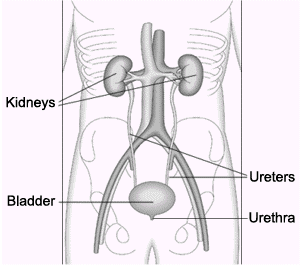Renal colic is a type of pain commonly caused by kidney stones.
The pain typically begins in the kidney area or below it and radiates through the flank until it reaches the bladder. The pain is colicky in nature, meaning that it comes on in spasmodic waves as opposed to being a steady continuous pain. It may come in two varieties: dull and acute; the acute variation is particularly unpleasant and has been described as one of the strongest pain sensations felt by humans.
Depending on the type and sizes of the kidney stones moving through the urinal tract the pain may be stronger in the renal or bladder area or equally strong in both.
Most small stones are passed spontaneously and only pain management is required. For this type of pain, strong Non-steroidal anti-inflammatory drugs (NSAID) such as Diclofenac provide better pain relief than opiates. Lying down on the non-aching side and applying a hot bottle or towel to the area affected may help. If the pain is not too intense, a more speedy release of the stones may be achieved by walking.
Larger stones may require intervention for their removal (see kidney stones).
Kidney stones, one of the most painful of the urologic disorders, are not a product of modern life. Scientists have found evidence of kidney stones in a 7,000-year-old Egyptian mummy.
 The urinary tract, or system, consists of the kidneys, ureters, bladder, and urethra The urinary tract, or system, consists of the kidneys, ureters, bladder, and urethra |  Kidney Stones |
No comments:
Post a Comment